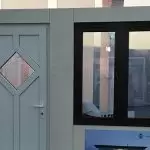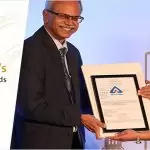An audit done by TERI-UTC Centre of Excellence at 100 existing buildings including Genpact, Wipro, Kohinoor, Nanavati, and other buildings showed potential to save 8960 MWh/yr, which is sufficient to power more than 12,000 rural homes.
Post your Requirement
The TERI Centre of Excellence, launched by The Energy and Resources Institute (TERI) and United Technologies Corp. (UTC) in 2014, has conducted energy audits at 16 commercial building spaces across various climatic zones in India. The results of these audits show a total potential energy savings of 8960megawatt hours in a given year, andit is estimated that thesaved energy can power up to 400 urban or 2400 rural homes. Extrapolating the same to the 100 existing buildings that the Centre of Excellence is studying, energy savings will be sufficient to power more than 12,000 rural homes.
At the deliberations held on October 9th, 2015 to celebrate the one year anniversary of the TERI Center of Excellence and address the challenges and opportunities of making existing buildings more energy efficient, various stakeholders shared their experience and focused on the need to create financial models to implement appropriate measures in buildings. Stakeholders also addressed the results of the recent audits and discussed ways of improving mechanisms for measuring the energy performance of our buildings.
“Meeting the energy demands of India’s growing urban population both sustainably and efficiently is critical,” said Dr. J. Michael McQuade, Senior Vice President, Science and Technology, United Technologies. “Through UTC’s relationship with TERI, we are able to bring awareness to the importance of increasing energy performance and improving energy efficiency in India’s buildings.”
The audited commercial spaces include offices, hospitals and hotels: Genpact spaces in Delhi/NCR, Jaipur; Wipro, Chennai; Tata Chemicals, NOIDA; Google, Hyderabad; India Habitat Centre, New Delhi; Kohinoor spaces in Mumbai; Nanavati Hospital, Mumbai; Hinduja Hospital, Mumbai; BL Kapoor Hospital, New Delhi; PGI Hospital, Chandigarh.Located across at least three types of climatic zones – hot and dry, composite, warm and humid – the energy audit helped to identify the mechanisms that cause the heavy energy consumption and the tools required to minimize it.
In her welcome address, MiliMajumdar, Secretary cum Treasurer, GRIHA Council said, “The project thus far has provided enormous insights into potential saving opportunities in existing hospital, hospitality and office building segments. We have received interest from over 30 organisations and institutions…We need to deploy appropriate techniques, technologies,resources and enabling policies to be able to realize the potential.”
DrAjay Mathur, Director General, Bureau of Energy Efficiency, said in his keynote address – “This country is going through a large building boom and an energy boom in those buildings. 60 per cent of the buildings that will exist in 2030 are yet to be built.” Thus, there is a “carbon cost” of it to the world. This Centre with its broad mandate can provide a huge amount of learning to the wider world in terms of a “communication, marketing and finance model as it becomes an integral part of how we move ahead.”
An analysis of energy consumption in commercial spaces performed by TERI in 2012 showed that offices and hospitality sectors constitute 50%of the total energy consumption; and that of the hospitality sector is set to increase by six times by 2021 (2011 as reference year). Although hospitalsmake uponly 9% of the electricity consumption,the sector as a whole cannot be ignored while dealing with energy efficiency in existing commercial buildings in India. It was for this reason that these three sectors were selected for the study.
Key Findings
Extrapolating the data of 16 buildings’ capacity to save energy to the full 100 buildings means that the energy thus saved is sufficient to power more than 12000 rural homes.
Last year’senergy audits showed that 55% of energy consumed in commercial buildings is consumedby HVAC (Heating, Ventilation and Air Conditioning), 25% by lighting, 15% by internal loads, and 5% by otherelements. TERI conducted the surveys in existing conventional air conditioned commercial buildings, and found that these buildings can achieve:
- Upto 15-20% in energy savings through energy efficient chillers, pumps and fans
- Upto 10% in energy savings through energy efficient lighting systems
- Upto 5% in energy savings by incorporating features like efficient glass and roof treatment (insulation or high reflective paints)
Several big groups including Marriott hotels, Taj group of hotels, ITC hotels, Manipal group of hospital, Max hospitals, and facility management firms such as JLL and CBRE are also committed to participating in the TERICentre of Excellence activities. Central Public Works Department (CPWD) has also committed about 25 buildings for the survey.
The Centre of Excellence, which is the only dedicated body for evaluating energy consumption of existing buildings in India, was set up with the following objectives:
- Develop an energy use reporting framework for the existing building sector
- Evaluate the energy rating systems ofexisting buildings
- Derivethe tools and techniques for energy management, real time reporting of energy consumption, and identification and cost benefit analysis of energy conservation measures
- Develop Measurement and Verification (M&V) protocol for establishing the energy saving potential of various energy conservation measures
- Formulate the design and retrofit guidelines that could be suggested as an addendum to relevant codes and standards
- Develop supportive standards and regulations that will enable market uptake of energy efficient technologies
The Centre of Excellence aims to conduct studies throughout 100 buildings across major cities including Delhi/NCR, Mumbai, Chennai, Bangalore, Kolkata, Hyderabad, Pune, Ahmedabad, Surat, Jaipur, Allahabad, Ajmer and Vishakhapatnam. The selected citiesare part of the Smart City Program launched by Government of India.
To meet its objectives, TERI, in consultation with UTC, will utilize various literature surveys, energy surveys, financial models, M&V protocol, and various other tools and techniques.
TERI is an independent, not-for-profit research institute focused on energy, the environment and sustainable development, and is devoted to efficient and sustainable use of natural resources. Since its inception in 1974, TERI has emerged as an institution of excellence for its path-breaking research, and is a global brand widely respected by political leaders, policy makers, corporate entities as well as the civil society at large.























Post A Comment